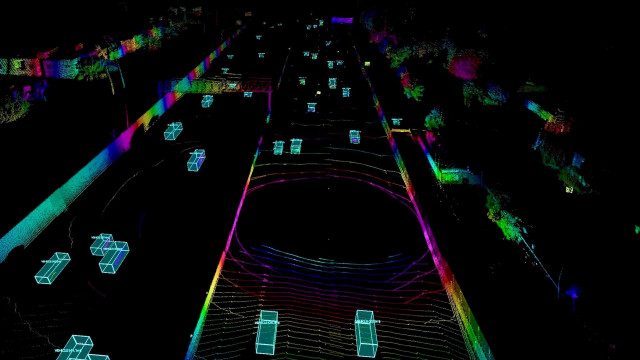Volvo and its self-driving car technology partner, Luminar, said they’ve made a major advance in lidar technology that helps autonomous vehicles “see” its surroundings like never before.
Lidar is an essential component that allows a self-driving car to view the world around it and determine the actions of moving objects, such as other cars and pedestrians. Today’s lidar can see about 130 feet ahead, but Luminar said in a Tuesday announcement that the latest technology can see 820 feet ahead. The extra “sight,” so to speak, helps the self-driving car see 7.5 seconds ahead of itself. With greater distance, the self-driving car will be able to comprehend events further ahead of it and operate at higher speeds.
Volvo Luminar next-generation lidar
Volvo’s research and development head, Henrik Green, said the advance is important as the brand looks to launch its next XC90 crossover SUV with Level 4 self-driving capability. Level 4 on the autonomy scale means the SUV will be able to handle all driving situations, but a steering wheel and pedal remain for the passenger to drive the vehicle. Volvo targets 2021 as an introduction date for the technology.
READ THIS: Volvo to test self-driving cars on Swedish roads before 2021 launch
Luminar said it should be able to put the latest lidar system into series production by then, but major work remains before the two realize their goals. Now, both companies will need to develop the software and intelligence for a self-driving car to understand millions of objects and interpret what their intentions are. The lidar is so precise that it can identify human poses, even specific limbs.
Numerous other automakers and technology companies also have a stake in the segment. While Volvo hasn’t been regarded as a leader in the space, advanced lidar could help cement its position against General Motors and Google’s Waymo.
Source: Read Full Article

